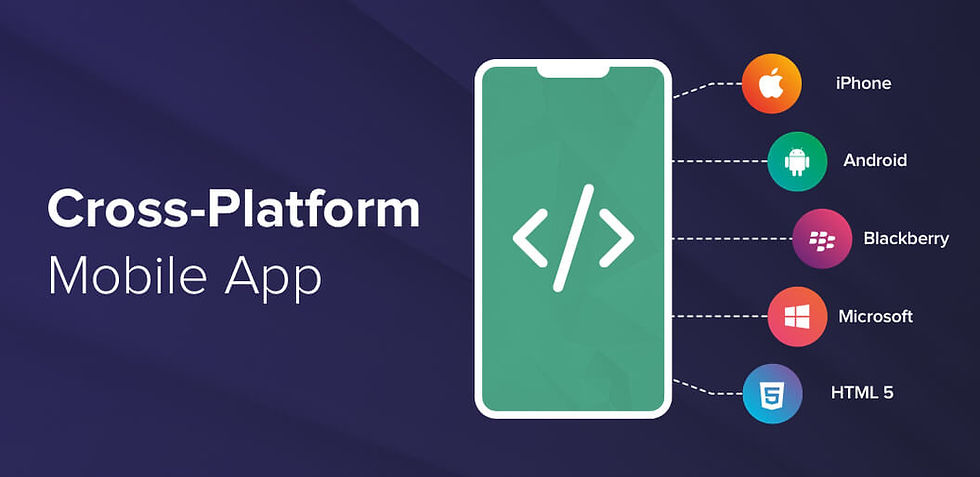Building the Perfect Web Development Team in 2025: A Complete Guide
- shehreenfatima773
- Jul 18
- 3 min read

Hiring the right web development team is a game-changer for startups and enterprises alike. From front-end design to backend infrastructure, the synergy between developers, designers, and QA specialists can make or break your digital product. Whether you're launching a custom CMS or scaling a SaaS platform, your developers are the architects of your success.
Let’s say you're ready to launch a new iOS app. You'll likely start by trying to hire iOS app developers. But without a strong web team to support the backend, integrate APIs, or manage databases, your mobile app won’t deliver a seamless user experience.
This guide shows you how to build a high-performing, agile, and reliable web development team—optimized for today’s technologies and 2025’s development landscape.
Why the Right Web Development Team Matters More in 2025
The modern digital experience spans across devices, platforms, and user expectations. In 2025, websites aren’t just static assets—they are living platforms. You need a team that understands responsive design, fast-loading UI, secure coding practices, and scalable infrastructure.
1. The Rise of Full-Stack & Specialized Roles
According to the Stack Overflow Developer Survey 2024, over 54% of developers now identify as full-stack, but niche experts like DevOps engineers and performance optimizers are in high demand.
2. Global Collaboration Is the Norm
Top web teams today are distributed across time zones. With tools like GitHub Copilot, Slack, Notion, and Jira, teams can push updates faster than ever.
3. Real-World Case Study:
A fintech startup hired remote React and Node.js developers alongside their internal iOS team. With daily GitHub commits, their web development team built a dashboard MVP in under 8 weeks—cutting time to market by 40%.
How to Assemble a Top-Tier Web Development Team
A successful team balances tech skills, communication, and project ownership. Here's a proven process:
Step 1: Define the Core Roles
Start by mapping out roles such as:
Front-End Developer (React, Vue, etc.)
Back-End Developer (Node.js, Laravel, etc.)
DevOps Engineer
UI/UX Designer
QA/Automation Tester
Each role should be mapped to a business outcome—like faster load times or reduced churn.
Step 2: Choose Hiring Platforms That Match Your Goals
Use:
Toptal or Arc.dev for elite, vetted talent
Upwork for flexible hiring
LinkedIn Jobs for full-time roles
AngelList Talent for startup-ready engineers
Look for profiles with active GitHub accounts or open-source contributions.
Step 3: Align with Your Product Roadmap
Your web development team should be involved from discovery to post-launch. Use agile sprints, weekly demos, and design reviews to keep everyone aligned.
Tools & Technologies Your Web Development Team Should Know
In 2025, knowing just HTML and JavaScript isn’t enough. Your team should be fluent in modern, scalable tools.
Next.js or Nuxt.js for SEO-friendly SPAs
Tailwind CSS for rapid UI development
Docker & Kubernetes for scalable infrastructure
Firebase or Supabase for real-time apps
Playwright or Cypress for automation testing
AI-powered assistants like GitHub Copilot for productivity boosts
“We integrated GitHub Copilot into our sprint cycles and found a 28% drop in code review times.” – Lead Developer, SaaS Company (GitHub Blog, 2024)
Mini Case Study: Speed Meets Quality
Client: EdTech Platform in EuropeProblem: Slow load times and API failuresSolution: They hired a web development team that included a back-end specialist and a performance analyst. Using Lighthouse reports and New Relic, they optimized the backend and front-end bundles. Result? Site load time reduced from 4.3s to 1.7s, boosting user retention by 15%.
Key Takeaways
👨💻 Build your web development team with defined roles and clear KPIs.
🚀 Use modern stacks (React, Tailwind, Node.js, Docker) and AI tools.
🌍 Embrace remote-first practices and real-time collaboration platforms.
✅ Focus on product alignment—not just code quality.
💼 Integrate your web devs with your iOS app developers for cohesive UX.
FAQs: Building a Web Development Team
1. Should I hire generalists or specialists?
It depends on your project scope. MVPs benefit from full-stack generalists; scaling products need specialists in performance, DevOps, or security.
2. What’s a good team size for a startup?
Start with 4–6 people: a front-end dev, back-end dev, UI/UX designer, QA, and PM. Expand as complexity grows.
3. How do I assess developer quality remotely?
Use paid test tasks, GitHub code review, and trial sprints. Also, evaluate soft skills—clarity, async communication, and problem-solving.
Final Thoughts: Your Web Development Team Is Your Growth Engine
Your web development team isn’t just building a website—they’re creating your brand’s digital backbone. Whether you’re scaling SaaS, launching a new platform, or integrating with your mobile app, the team you build today shapes your success tomorrow.
Start with clarity, choose the right tools, and collaborate seamlessly. Most importantly, ensure they’re aligned with your product goals—and your hire iOS app developers efforts—to create a frictionless, modern digital experience.




Commentaires